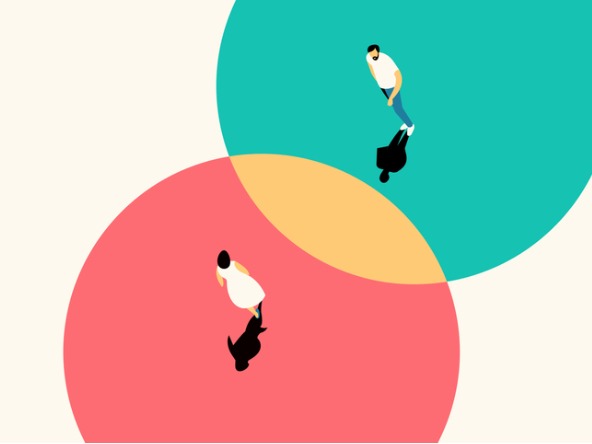Keeping qualitative research human

Listening into industry conversations, the narrative is clear. Following the online challenge, the humanness of qualitative research is now under even greater threat from the massed forces of artificial intelligence (AI).
It is good to see the defining humanness of qualitative finally acknowledged, but we need to be much clearer the about what we mean by ‘humanness’ and the potential and existing threats it faces.
In what sense then can traditional qualitative research be considered a specifically human discipline? From its origins it was designed to reflect human complexity and respect human individuality. The emphasis on building trust through non-judgemental relationships is traceable to humanistic psychology. Researchers utilise the (very human) attributes of empathy and intuition to gain understanding and reveal insight. Qualitative research is human to its core. The face-to-face interaction is an important part of humanness but just one aspect of it.
This humanness has been under threat from a range of industry changes, long before online and AI emerged. Taken individually these changes were often inevitable, sometimes advantageous. If it takes AI for the research industry to appreciate and truly understand the centrality of humanness in qualitative research – and indeed its precariousness, then I might go as far as welcoming them.
I want to explore some of the key changes that have compromised the humanness of qualitative and think about ways we reverse, or at least mitigate some of the damage.
The viewing facility dynamic
Once viewing meant the client ‘dressing down from office smart into jeans’ and sitting in the corner of the front room of a suburban home. The rise of the viewing facility has put pay to this now quaint-seeming tradition.
These facilities have become much more homely places over the last few years, but the dynamic such venues create remains consistent, namely a pressure on moderators to perform to the backroom, rather than stay ‘present’ with participants in the front room. A conscious awareness of this pressure, and the confidence to resist it, can come with experience. A knowledgeable client in the backroom is vital in setting tone and expectations.
The backroom culture can facilitate client ‘team viewing’, important for the pilot session, but for most viewings perhaps we should consider a return to those much-maligned, chintzy suburban dwellings? I think clients who attend these sessions will find the experience of being in the room eye-opening – and discover they are able to ‘feel’ the group, not just witness it.
Humans and consumers
Research bridges the gap between the commercial and real world, bringing the human perspective into a business sphere. Boundaries are important though and there is a risk of over-identifying with our clients to the extent that we begin to see participants through the business lens, as (mere) ‘consumers’.
Avoiding this thinking is an ethical choice but also impacts quality. It is perhaps ironic, but it is by treating people as individuals that we identify meaningful commonalities. In practical terms this means we start with ‘human’, not brand or product questions. These questions are more than a mechanical ‘warm-up’ exercise, they can identify emotional and cultural insight that brands can use to forge deeper connections.
‘Toplining’ the human
Pressurised timelines can and do impact our mental health, but it is our responsibility to ensure they don’t undermine our humanistic values – commitment to analysis and interpretation is one of those values. Over-reliance on video clips and toplines can be reduce the richness of the research and limit is value.
Both have their place. Next-day toplines can be a useful addition to qualitative thinking, as what is filtered by our memory overnight is often a good barometer of importance. Video clips can add texture to findings, provided the quest for a ‘great clip’ doesn’t overwhelm the process.
The analysis and interpretation process must comprise two elements. Firstly, the researcher should ‘revisit the data’, freed from the mechanical needs of moderation. How the researcher does this depends on personal preference – personally I like to think about the sessions while on a run. A group analysis and interpretation is the second mandatory stage.
The ‘analysis process’ sounds dead on the page but it is where the magic often comes from.
Face-to-face symbolises humanness but is just one aspect
Perhaps it is the literal non-humanness of online that galvanised the industry into constructive defence? We have been at our best exploring ways to make the Zoom experience as human as possible and significant progress has been made.
It is tempting, however, to misinterpret face-to-face as the totality of humanness, rather than a powerful symbol of it. It should not overshadow or obscure the multiple human aspects detailed above. Indeed, I’d go as far as to say that a face-to-face interview without the emotional commitment of the moderator is less human than an online interview where the researcher is truly present in the moment.
This is not an article about AI, but if it was...
Far from a Luddite’s charter, reprioritising the humanness of qualitative research is the best way to future proof the industry. The empathy and intuition, the creativity of insight generation, are examples of components where AI will struggle. I harbour a secret hope that AI may encourage us to play to our human strengths, to take more risks, make more leaps.
There may well be tasks it makes sense for AI to take off our hands and we should explore these options with enthusiasm. AI can play a role – but as a tool, firmly under our human control.
Peter Totman is head of qualitative research at Jigsaw Research.

We hope you enjoyed this article.
Research Live is published by MRS.
The Market Research Society (MRS) exists to promote and protect the research sector, showcasing how research delivers impact for businesses and government.
Members of MRS enjoy many benefits including tailoured policy guidance, discounts on training and conferences, and access to member-only content.
For example, there's an archive of winning case studies from over a decade of MRS Awards.
Find out more about the benefits of joining MRS here.














0 Comments